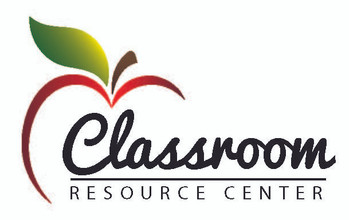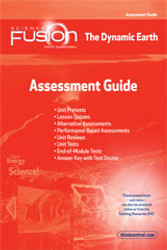ScienceFusion Assessment Guide: Grades 6-8 Module B: The Human Body
The ScienceFusion formative and summative assessment options give you maximum flexibility in assessing what your students know and what they can do. The Assessment Guide includes a comprehensive overview of your assessment options and including copymasters for Lesson Quizzes, Unit Tests, Standardized Test Preparation, and Performance Assessments; answers and explanations of answers; rubrics; a bubble-style answer sheet; and suggestions for assessing student progress using performance, portfolio, and other forms of integrated assessment.
- Lesson Quizzes
- Unit Tests
- Unit Performance Assessment
- Cumulative Tests
- Student Self-Assessment
- Answer Keys
Material Type: Teacher Materials
Format: Softcover, 136 Pages
ISBN-13/EAN: 9780547593227
ISBN-10: 0547593228
Product Code: 1462110
National/State: National
Copyright Year: 2012
To meet the needs of today's student, Science Fusion is designed for multi-modal learning and teaching. This means two very important things:
- Every lesson is designed to be accessed in print and digital environments.
- Learning strategies are specific to the learning experience.
No two students are alike, and each student learns in different ways - visual, kinesthetic, reading, or writing. With Science Fusion, every lesson is designed to be accessed in multiple ways, and you get a full curriculum of digital and print lessons that are complementary. Each lesson provides unique options so students can learn and apply new concepts and skills.
The Program is organized around 3 core parts:
- a write in consumable student edition
- a parallel, but unique digital curriculum
- leveled hands-on activities in the Inquiry Flipcharts.
Core Curriculum Components:
Write-In Student Edition: The magazine-style interactive, write in Student Edition engages and connects students to inquiry, STEM, and 21st-century skills. Research has shown that today's students process information differently, and the Student Worktext is designed to reflect this. Rather than bombard students with page after page of text, the program uses visual cues to draw students through a progression of informative elements. This two-page spread, magazine-like format engages students in their lessons. This verbal/visual blend of images and engaging text promotes a student-centered approach to learning that integrates interesting sidebar tidbits, friendly fonts, and lots of short, interactive exercises that ask students to predict, explain, synthesize, define, and summarize elements of the text.
- Lessons begin with Essential Question and Engage Your Brain activities
- Active Reading, Visualize It, and Do The Math activities guide students through lessons and aid understanding
- Lesson Review activities check comprehension, apply concepts, and promote critical thinking
Student Interactive Digital Curriculum Science Fusion's Student Interactive Digital Curriculum uses cutting edge research on online learning to deliver students a full elearning science curriculum, including digital lessons, virtual labs, Video-based projects, animations, simulations, and access to science eTextbooks. The Student Interactive Digital Curriculum is more than a supplemental companion e-book text, but rather provides a unique online lesson. The interactive digital curriculum is designed to be flexible, so that you can assign the most appropriate parts to your students. Lessons, virtual labs, simulations, animations, and videos can be assigned to individual students, demonstrated through a projector, or displayed on a digital whiteboard.
- Digital Lessons
- People in Science
- Interactive Glossary
- Unit Quizzes
- Virtual Labs
- Video-based projects, animations, simulations
- Access to science eTextbooks
The Online Teacher Digital Management Center: Is designed to make it easier for you to access all of the program resources - teacher and student - to assist you in planning, teaching, assessing and tracking student progress. Video-centered, inquiry-based projects consist of a video, teacher support pages, and student activity workshops, with 1-2 included per module. Teacher lessons guide instructors through activities, questions, misconceptions, differentiated instruction, preparation, troubleshooting, expected results, learning goals, estimated times for each activity, and more. Unit planning pages offer review and instruction on integrating the print text, digital curriculum, and hands-on inquiry. Assessments can be given online or printed, and both formative and summative assessments are included.
- Electronic Teacher Edition
- ExamView Test Banks
- Downloadable versions of all resources and assessments
- Teacher support for digital lessons, Video-Based projects, and Virtual Labs
- Functionality for scheduling and assigning work for students
Teacher features include:
- Program resources that can be easily previewed in PDF format and downloaded for editing.
- The ability to assign and schedule resources online, which will appear in your students' inboxes.
- Automatically scored quizzes and tests.
- Student progress can be easily monitored and tracked.
Print Teacher Edition: Each lesson of the Teacher Edition has a wealth of teaching support, including activities, probing questions, misconception alerts, differentiated instruction, and vocabulary support.
- Unit planning pages with print, hands on and digital options for every unit plus differentiated instruction options.
- Lessons organized around a 5E lesson format.
Hands On Activities: Leveled Labs and activities provide students with a hands-on environment where they can learn in a multi-sensory interaction. Essential Questions connect what students learn in a hands-on setting to the content and skills learned in the write-in textbook and digital lessons. To help you match instruction to your child's needs, inquiry levels are provided for every lab of ScienceFusion.
- Inquiry Lessons include datasheets for convenient recording of observations and conclusions.
- Every hands-on inquiry lesson has a virtual lab so that students can apply the skills they learn in both a hands-on and online setting
- Laminated Inquiry Flip Charts deliver three levels of hands-on inquiry for every lesson and can be placed on a table for centers or small group areas so students can work as lab partners or in collaborative groups.
Assessment Guide - Directory to assessment in Science Fusion, including copy masters for Lesson Quizzes, Unit Tests, Standardized Test Preparation, and Performance Assessments; answers and explanation of answers; rubrics; a bubble-style answer sheet; and suggestions for assessing student progress using performance portfolio, and other forms of integrated assessment.
Grade Level Equipment Kits - Many of the materials needed to complete the Guided Inquiry activities in the program packaged together for ease of use. Replacement kits for consumable items available.
The Safety Kit - provides materials you need to address classroom safety while performing activities
Inquiry Tool Kit - Contains common material to help with the K-5 Guided Inquiry Activities. This low-cost solution can be shared between teachers and contains enough material for one set-up.
For Grades K-5: Curriculum includes materials for one year of science study. In addition to traditional science topics, each elementary level includes a unit on science and technology, progressing from science skills to understanding technology to the engineering process.
For Grades 6-8: We offer 11 modules, ten covering key life, earth, and physical science topics plus one on science and technology careers. These modules are not designed as full-year science curriculum; three or four modules can be completed in one year. Modules are appropriate for all middle grades, so you can choose whether to mix life, earth and physical science topics or focus on one.
Middle Grade Modules Include:
- Cells and Heredity
- The Diversity of Living Things
- The Human Body
- Ecology and Environment
- The Dynamic Earth
- Earth's Water and Atmosphere
- Space Science
- Matter and Energy
- Sound and Light
- Introduction to Science and Technology














